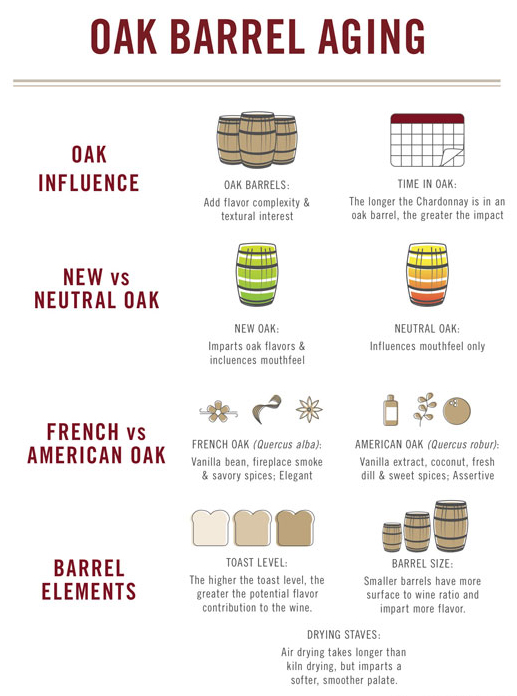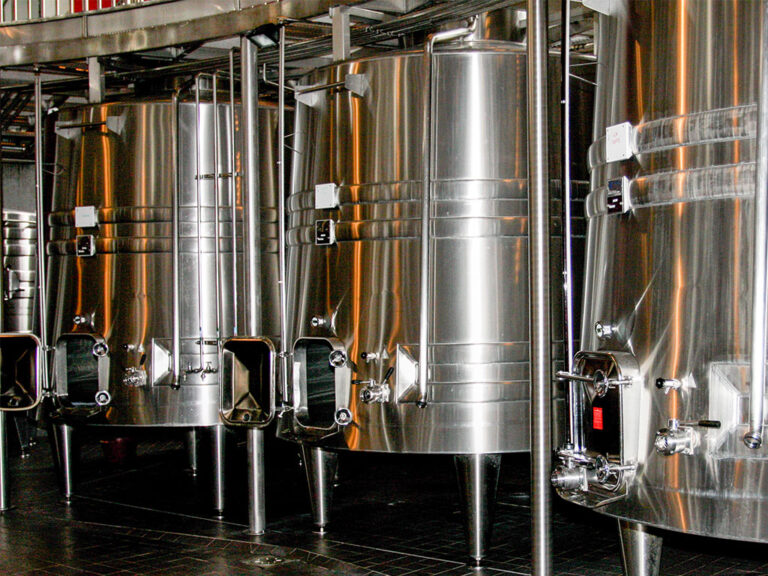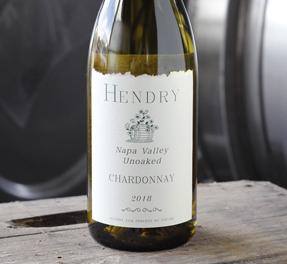
America long ago fell in love with the charms of Chardonnay. Ripe, buttery, and creamy, yet crisp and fresh with hints of green apple, pear and just a kiss of sweet vanilla. This array of flavors begins with the grape itself, but is further enhanced by aging in new oak barrels. But what if we remove oak from the process, replacing it with flavorless stainless steel? The transition is dramatic – and rapidly gaining in popularity.
American Chardonnays are almost always oaked, which is why they’re known for that buttery creaminess. Steel-aged Chardonnays lean towards those bright apple and citrus flavors. You’ll find them lighter, featuring more complex fruit flavors and floral notes.
When I conduct wine tastings, I love to pour Chardonnay from an unmarked carafe, so the taster does not have the assistance of a label. I ask them to taste the wine and simply name the primary grape variety. First, I pour traditional oaky Chardonnay and most folks are quickly able to identify the grape. I follow that with an unoaked version and those same enthusiasts are totally stumped, so dramatic is the difference.
Chardonnay is a very malleable white wine grape. Oak offers three major contributions to wine: It adds flavor compounds–including aromas of vanilla, clove, smoke and coconut. It allows the slow introduction of oxygen – a process which makes wine taste smoother and less astringent.

Barrel Fermentation is the process of fermenting wine in oak barrels instead of large concrete vats or stainless-steel tanks. Fermentation is, of course, the natural process that turns the sugar in grape juice into alcohol.
After its primary fermentation in new oak, the wine is typically moved to older oak barrels and undergoes what is known as Malolactic Fermentation. This secondary technique converts the grapes’ natural Malic acid to the softer Lactic acid, adding richness and complexity to the wine.

Stainless steel tanks secure the neutrality of the grape’s natural flavors. They keep out all light and are absolutely airtight. Because of this, no external aromatic components are conveyed into the wine, which allows the winemaker to capture the true essence of the varietal. This creates a purer and more refreshing type of wine.
Historically, unoaked Chardonnay is the rule in the Chablis sub-region of Burgundy, France. The wines there are predominantly made from the Chardonnay grape and have traditionally been made with stainless steel or concrete casks. Their wines express the true varietal characteristics of green apple, lemon with a long fruit driven finish. But Chablis can also be a bit tart and tangy, which is not typical of other unoaked Chardonnays.

One happy piece of the unoaked Chardonnay puzzle is that it is less expensive than its oaked cousins. Oak barrels, particularly French Oak barrels may be prohibitively expensive and hard to get. They are in great demand and, as we all know, demand drives price. American Oak is easier to obtain and less expensive, which is one reason why they are part of the process for less expensive wines producing the brighter, sweeter array of flavors… the hallmark of American Oak barrels. By the way, you should be aware that Chardonnays that sell for $15.00 or less rarely age their wine in real oak barrels but use a variety of artificial oak flavorings to a produce similar experience. All a part of the “fun with chemical” aspect of modern wine making.
Almost all major wine regions worldwide are now producing unoaked Chardonnays, although their numbers are few when compared to the mass produced alternatives and may, therefore, still be more difficult to find. Don’t look for them at your neighborhood grocery store. Head to a major wine retailer for the best selection.
Cheers!
